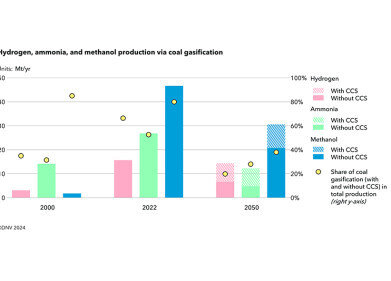Green Energy
Will We Ever Drive on Solar Powered Roads?
Nov 17 2014
Solar power is the future. It already helps to power our homes and our hospitals, it can be used to disinfect our water, and it can even be used to monitor the level of rubbish in our bins. So what’s next?
Around four years ago, engineer Scott Brusaw and his wife pioneered the idea of taking solar power to the next level by replacing the 75,000-miles of roadways in the United States with solar panels. But is it still a viable idea?
Earlier this year, the Brusaws released a very convincing video detailing the benefits of their project (if you haven’t yet seen it, take a look). In it, they claim that even if the scheme were only working at 15% capacity, it would be enough to power the whole of America. In addition to this, it would also offer a variety of other advantages, including underground cable networks to transport the electricity, LED lighting to replace road markings and thermal heating to melt snow.
An admirable idea - but could it really work?
Since the release of the promotional video, the incentive has garnered over $2.2 million in fundraising to trial the scheme. However, it has also raised some uncomfortable questions about how practical and feasible it actually is.
Firstly, there is the problem of expense. Were the project to be deployed immediately, replacing all of America’s tarmac with solar panels (which is, admittedly, not something the Brusaws have either proposed or encouraged), it would cost a whopping $34.5 trillion, a figure which would cripple the US economy in one fell swoop (it’s over double the entire GDP of the USA for 2011). Clearly, such widespread implementation all at once is neither possible nor desirable.
There are concerns about the materials too. Using glass to pave the surfaces of roads has been criticised as both short-sighted and dangerous. Will such a material be able to withstand the constant heavy pressure of millions of vehicles rolling over it for a prolonged period of time? And will it hold up and provide traction to cars moving at high speeds in adverse weather conditions?
Also, the idea of using a road – a surface which is traditionally covered in traffic during daylight hours – as a suitable for gathering energy has been challenged, as well. Since the panels will be covered by vehicles for a significant portion of the day, and will be subject to damage. It will also be covered by sand, oil, dirt and snow. Essentially, is a road the best choice?
Compromise
All of these points pose tricky questions for the Brusaws and their dream. Perhaps converting all of America’s roadways is not feasible or even desirable. But the idea is still an excellent one. The couple have been given a grant of $750,000 by the US Department of Energy, which will give them the chance to build prototypes on such places as car parks and driveways.
These smaller-scale pursuits may prove to be excellent choices for the future of Solar Roadways and with solar power giant Hanergy recently announcing a collaboration with F1 specialists Williams Advanced Engineering, the sky really could be the limit for solar energy on the road.
Events
May 05 2024 Seville, Spain
May 13 2024 Munich, Germany
May 23 2024 Beijing, China
May 23 2024 Beijing, China
Jun 10 2024 Algiers, Algeria














